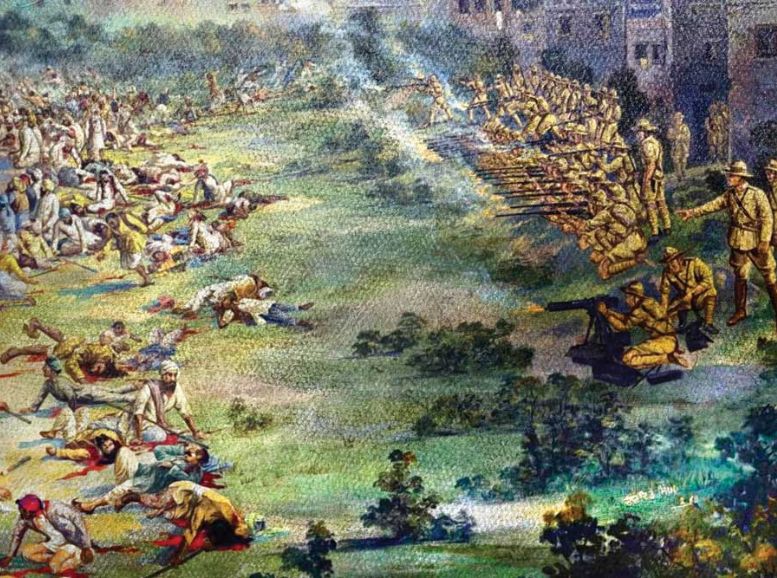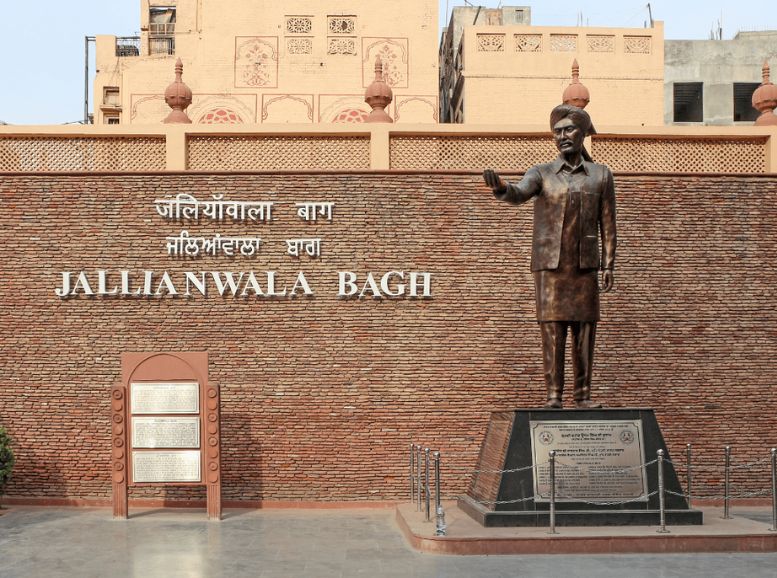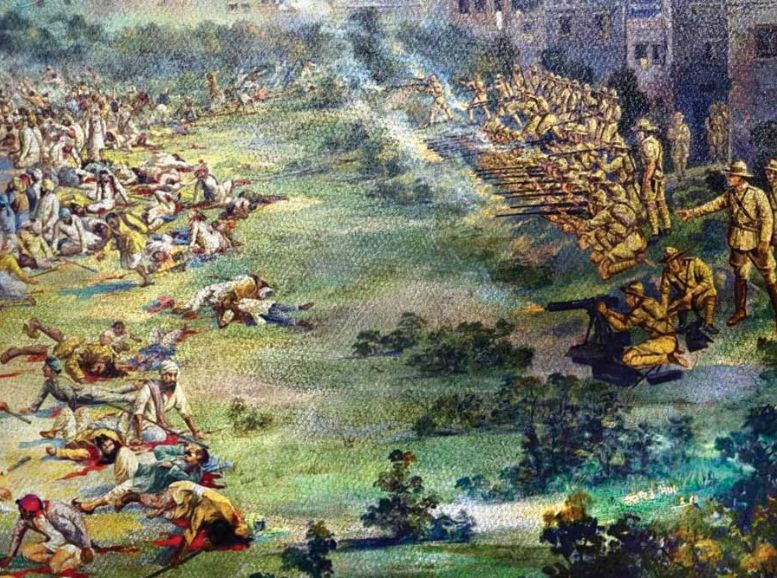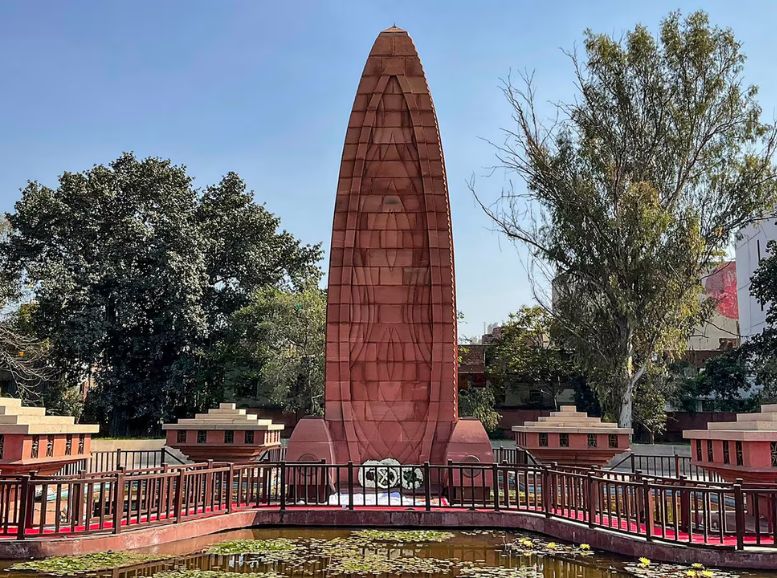In Amritsar’s heart lies Jallianwala Bagh, a tranquil garden echoing with India’s struggle for freedom. Though serene now, it holds a story etched in sacrifice. We delve into the layers of Jallianwala Bagh, uncovering the harrowing events of April 13, 1919, and its lasting impact on the nation’s fight for independence. Join us as we explore tales of heroism, remembrance, and the timeless lessons resonating within this sacred memorial’s walls.
how to reach:
- By Air: Sri Guru Ram Dass Jee International Airport, roughly 11 kilometers from the city center, serves Amritsar. Taxis and app-based ride-hailing services are readily available at the airport to whisk you to Jallianwala Bagh.
- By Train: Amritsar Junction Railway Station boasts excellent connections to major Indian cities. Upon arrival, taxis, auto-rickshaws, or even cycle rickshaws can take you the short distance (approximately 2 kilometers) to Jallianwala Bagh.
- By Road: Amritsar enjoys a well-connected road network, with frequent buses from nearby cities and states. Navigate directly using GPS if you’re traveling by car. Taxis and auto-rickshaws are also a convenient option for local travel within Amritsar.
- On Foot: If you find yourself near the Golden Temple, a major Amritsar attraction, Jallianwala Bagh is just a pleasant stroll away. The close proximity of these two landmarks allows visitors to explore both locations easily on foot.
Suggested time to visit:
Amritsar’s winter season (October to March) offers the ideal window to visit Jallianwala Bagh. Pleasant temperatures and cool breezes create a comfortable environment for exploring the park and other outdoor attractions. This period also coincides with vibrant Amritsar festivals like Diwali and Lohri, enriching your visit with the city’s cultural spirit.
Be mindful of avoiding the summer months (April to June) when Amritsar experiences scorching heat and humidity, making outdoor activities less enjoyable. Similarly, the monsoon season (July to September) brings heavy rain that can disrupt travel and sightseeing plans.
must-see attractions:
Unraveling the History:

This story hinges on a single, unforgettable date: April 13, 1919. This day became a permanent scar on India’s memory. Thousands of peaceful protestors, a mix of genders and ages, gathered in the Bagh to oppose the British Raj’s oppressive policies. Tragically, their peaceful demonstration took a horrific turn. As 5:00 pm struck, the tranquility shattered with the ruthless actions of British troops. They opened fire without warning on the unarmed crowd. The ensuing massacre left hundreds dead and thousands wounded, marking a dark stain on India’s fight for independence. This place’s bloodstained walls became a grim testament to colonial brutality, igniting a fire of resistance that ultimately paved the way for India’s freedom.
A Symbol of Remembrance:

This place has transformed into a solemn memorial honoring the martyrs who fell for freedom. The sprawling garden, etched with bullet holes and enclosed by walls whispering the cries of the fallen, stands as a poignant testament to the sacrifices made by ordinary citizens in the quest for liberty. Visitors are greeted by the towering Martyrs’ Memorial, a silent tribute to those who perished. The ever-burning Flame of Liberty illuminates the path through the garden, casting a solemn glow and inviting reflection and remembrance.
Honoring the Legacy:

The martyrs’ courage serves as a timeless inspiration, a beacon for generations pursuing justice and equality. By honoring these past sacrifices, we recommit ourselves to the values of freedom, democracy, and human rights. Jallianwala Bagh transcends a memorial; it’s a call to action for the future. It reminds us that the fight for justice and dignity is a continuous journey demanding courage, determination, and unity.
The Spirit of Unity: Jallianwala Bagh

It stands not only as a site of immense tragedy but also as a powerful testament to Indian unity. The massacre served as a catalyst, igniting a surge of support for the independence movement and transcending regional, linguistic, and religious divides. In the aftermath, people from all walks of life came together to condemn the brutality of British colonialism and demand justice for the victims. This spirit of unity and collective action laid the foundation for a stronger, more unified struggle against British imperialism, highlighting the power of solidarity in the face of oppression.
Local experiences:
Guided Tours: Visitors can embark on guided tours of Jallianwala Bagh. Knowledgeable guides share insights into the events leading up to the massacre, the massacre itself, and its aftermath. They often recount stories of bravery and sacrifice displayed by those present.
The Memorial and Martyrs’ Well: The site houses a memorial honoring those who lost their lives. Visitors pay their respects by laying flowers and observing a silent moment. The Martyrs’ Well, where many jumped to escape the gunfire, holds significant importance.
Light and Sound Show: In the evenings, a light and sound show is frequently held at Jallianwala Bagh. Through visuals and narration, the show depicts the events of the massacre, offering a poignant and immersive experience.
Reflection and Contemplation: Many visitors come to Jallianwala Bagh to reflect on history and pay homage to the martyrs. It’s a somber experience that evokes contemplation about the struggles for independence and the sacrifices made by freedom fighters.
Local Art and Culture: Around the Jallianwala Bagh complex, you’ll find local artisans selling handicrafts, paintings, and other souvenirs. These items often depict scenes from Indian history or showcase the vibrant culture of Punjab.
Connecting with Locals: Interacting with locals, especially those residing near Jallianwala Bagh, can provide valuable insights into the place’s contemporary significance and its continued resonance with the local community.
Safety tips:
- Be prepared for the outdoors: Carry water to stay hydrated and watch your step on uneven terrain.
- Follow the rules: Observe guidelines from Jallianwala Bagh authorities, including respecting restricted areas, not climbing on structures, and keeping the site litter-free.
- Stay vigilant: Be aware of your surroundings, especially in crowded areas, and keep an eye on your belongings.
- Dress comfortably: Choose lightweight, breathable clothing and comfortable shoes for walking.
- Respect local customs: Familiarize yourself with local customs, such as removing shoes in specific areas or covering your head at nearby religious sites.
- Enrich your visit: Learn about Jallianwala Bagh’s history and significance beforehand. Understanding the context will enhance your experience.
- Seek help: Don’t hesitate to ask staff or security personnel for assistance or information.
- Know the exits: Familiarize yourself with emergency exits for your safety.
Conclusion
Visiting Jallianwala Bagh offers a poignant journey through India’s history, where visitors can pay homage to the martyrs and reflect on the sacrifices made during the struggle for independence. It’s essential to approach the experience with respect, understanding, and awareness of safety considerations. As you explore this historical site, immerse yourself in its significance, listen to the stories of bravery and sacrifice, and take a moment to honor those who lost their lives.
By following safety guidelines, respecting local customs, and staying informed, you can ensure a meaningful and safe visit to Jallianwala Bagh. For a comprehensive and insightful tour, consider booking through Xplro.com, a reputable tour guide website. Xplro.com offers guided tours led by knowledgeable locals who can provide in-depth information about Jallianwala Bagh and its historical importance. With Xplro.com, you can enhance your experience and gain a deeper understanding of the site’s significance.
FAQs
What is Jallianwala Bagh?
- This place is a public garden located in Amritsar, Punjab, India, known for its historical significance due to the tragic events of the Jallianwala Bagh massacre in 1919.
Where is Jallianwala Bagh located?
- It is situated in the city of Amritsar, Punjab, India, adjacent to the Golden Temple complex.
What happened at Jallianwala Bagh?
- Jallianwala Bagh is infamous for the Jallianwala Bagh massacre, where British troops opened fire on a crowd of unarmed Indian civilians who had gathered for a peaceful protest, resulting in numerous deaths and injuries.
When did the Jallianwala Bagh massacre occur?
- The Jallianwala Bagh massacre took place on April 13, 1919.
How many people were killed in the Jallianwala Bagh massacre?
- While the exact death toll is debated, it is estimated that hundreds of people were killed, and thousands were injured during the massacre.
Is Jallianwala Bagh open to the public?
- Yes, it is open to the public for visitation and reflection on the historical events that occurred there.
What are the visiting hours of Jallianwala Bagh?
- Jallianwala Bagh is typically open from early morning until evening; however, visitors are advised to check the specific opening hours beforehand.
Is there an entry fee to visit Jallianwala Bagh?
- No, there is no entry fee required to visit Jallianwala Bagh. Admission is free for all visitors.
How long does it take to explore Jallianwala Bagh?
- The duration of a visit to can vary depending on individual interests, but typically, visitors spend around 1 to 2 hours exploring the site.
Are guided tours available at Jallianwala Bagh?
- Yes, guided tours led by knowledgeable local guides are available, offering insights into the historical significance of the site.
What are some nearby attractions to visit along with Jallianwala Bagh?
- Nearby attractions include the Golden Temple, Partition Museum, and Wagah Border ceremony.
Is photography allowed inside Jallianwala Bagh?
- Yes, photography for personal use is permitted inside Jallianwala Bagh.
Are there any restrictions on entry to Jallianwala Bagh?
- While there are no specific entry restrictions, visitors are expected to adhere to the site’s guidelines and maintain decorum.
What is the significance of the Martyrs’ Well at Jallianwala Bagh?
- The Martyrs’ Well is a symbol of the bravery and sacrifice of the martyrs who jumped into it to escape the firing during the massacre.
How can I pay tribute to the martyrs at Jallianwala Bagh?
- Visitors can pay tribute to the martyrs by observing a moment of silence, laying flowers at the memorial, and reflecting on the sacrifices made for India’s independence.





